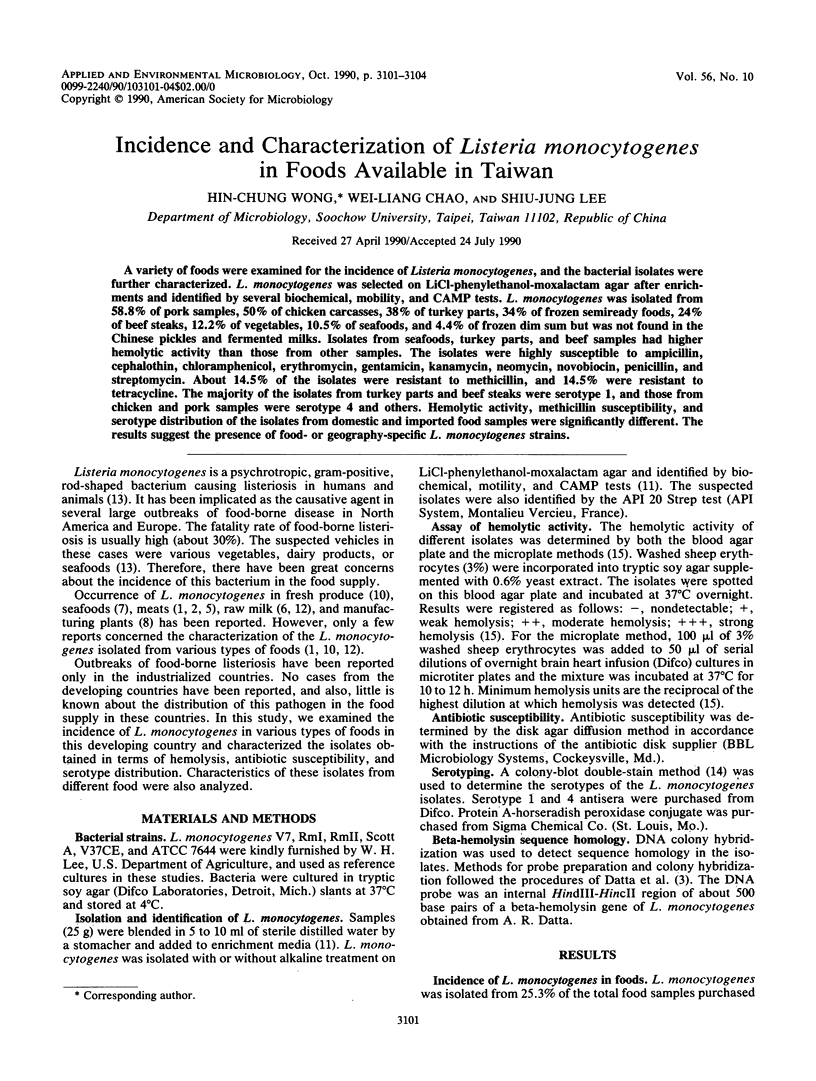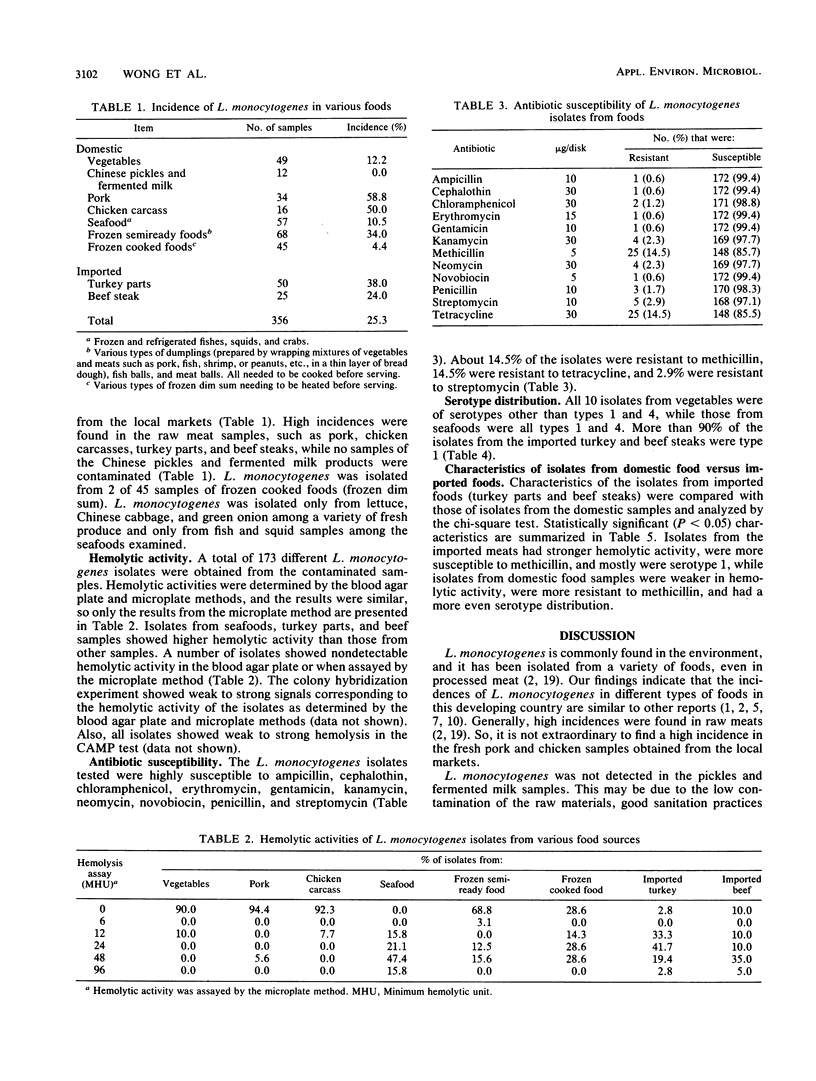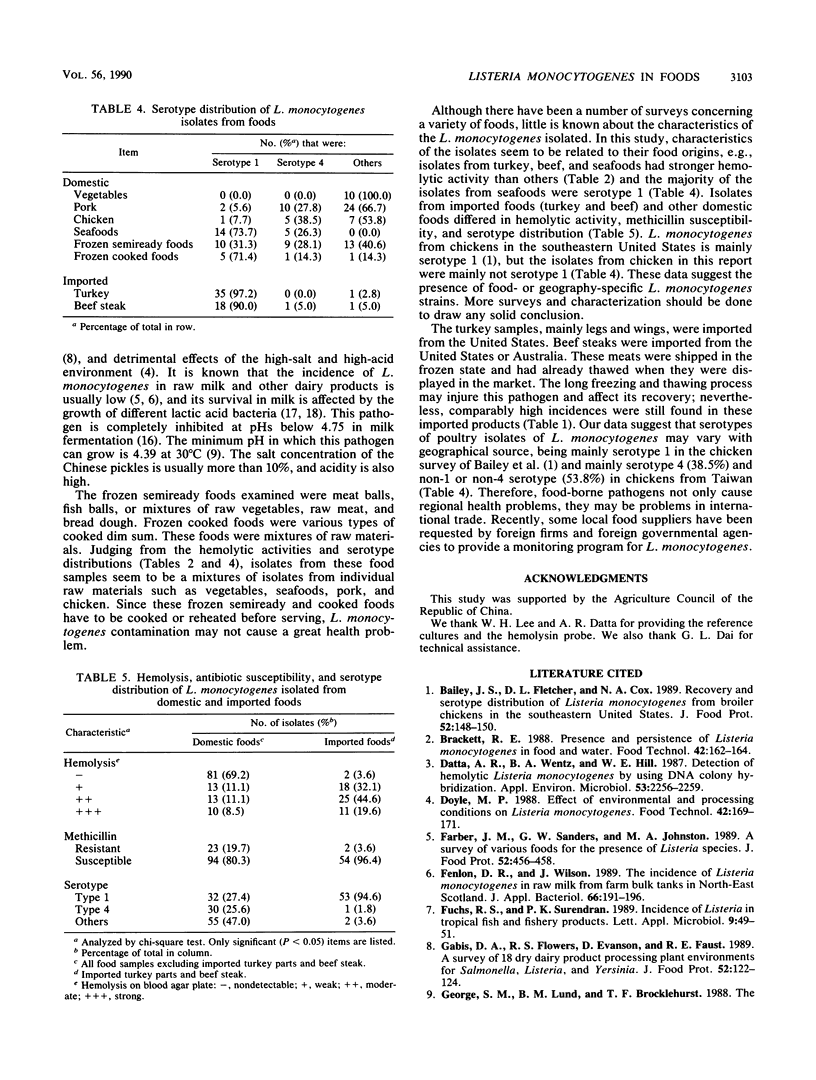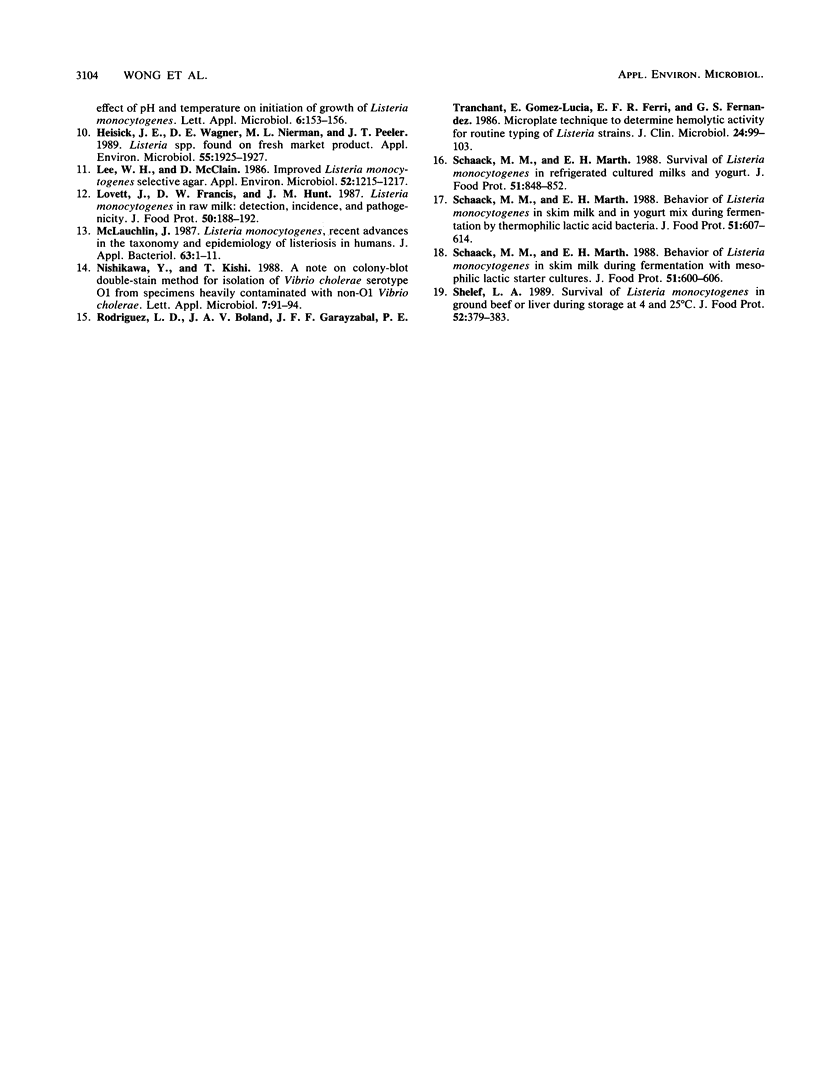Abstract
A variety of foods were examined for the incidence of Listeria monocytogenes, and the bacterial isolates were further characterized. L. monocytogenes was selected on LiCl-phenylethanol-moxalactam agar after enrichments and identified by several biochemical, mobility, and CAMP tests. L. monocytogenes was isolated from 58.8% of pork samples, 50% of chicken carcasses, 38% of turkey parts, 34% of frozen semiready foods, 24% of beef steaks, 12.2% of vegetables, 10.5% of seafoods, and 4.4% of frozen dim sum but was not found in the Chinese pickles and fermented milks. Isolates from seafoods, turkey parts, and beef samples had higher hemolytic activity than those from other samples. The isolates were highly susceptible to ampicillin, cephalothin, chloramphenicol, erythromycin, gentamicin, kanamycin, neomycin, novobiocin, penicillin, and streptomycin. About 14.5% of the isolates were resistant to methicillin, and 14.5% were resistant to tetracycline. The majority of the isolates from turkey parts and beef steaks were serotype 1, and those from chicken and pork samples were serotype 4 and others. Hemolytic activity, methicillin susceptibility, and serotype distribution of the isolates from domestic and imported food samples were significantly different. The results suggest the presence of food- or geography-specific L. monocytogenes strains.
Full text
PDF



Selected References
These references are in PubMed. This may not be the complete list of references from this article.
- Datta A. R., Wentz B. A., Hill W. E. Detection of hemolytic Listeria monocytogenes by using DNA colony hybridization. Appl Environ Microbiol. 1987 Sep;53(9):2256–2259. doi: 10.1128/aem.53.9.2256-2259.1987. [DOI] [PMC free article] [PubMed] [Google Scholar]
- Dominguez Rodriguez L., Vazquez Boland J. A., Fernandez Garayzabal J. F., Echalecu Tranchant P., Gomez-Lucia E., Rodriguez Ferri E. F., Suarez Fernandez G. Microplate technique to determine hemolytic activity for routine typing of Listeria strains. J Clin Microbiol. 1986 Jul;24(1):99–103. doi: 10.1128/jcm.24.1.99-103.1986. [DOI] [PMC free article] [PubMed] [Google Scholar]
- Fenlon D. R., Wilson J. The incidence of Listeria monocytogenes in raw milk from farm bulk tanks in north-east Scotland. J Appl Bacteriol. 1989 Mar;66(3):191–196. doi: 10.1111/j.1365-2672.1989.tb02469.x. [DOI] [PubMed] [Google Scholar]
- Heisick J. E., Wagner D. E., Nierman M. L., Peeler J. T. Listeria spp. found on fresh market produce. Appl Environ Microbiol. 1989 Aug;55(8):1925–1927. doi: 10.1128/aem.55.8.1925-1927.1989. [DOI] [PMC free article] [PubMed] [Google Scholar]
- Lee W. H., McClain D. Improved Listeria monocytogenes selective agar. Appl Environ Microbiol. 1986 Nov;52(5):1215–1217. doi: 10.1128/aem.52.5.1215-1217.1986. [DOI] [PMC free article] [PubMed] [Google Scholar]
- McLauchlin J. Listeria monocytogenes, recent advances in the taxonomy and epidemiology of listeriosis in humans. J Appl Bacteriol. 1987 Jul;63(1):1–11. doi: 10.1111/j.1365-2672.1987.tb02411.x. [DOI] [PubMed] [Google Scholar]


